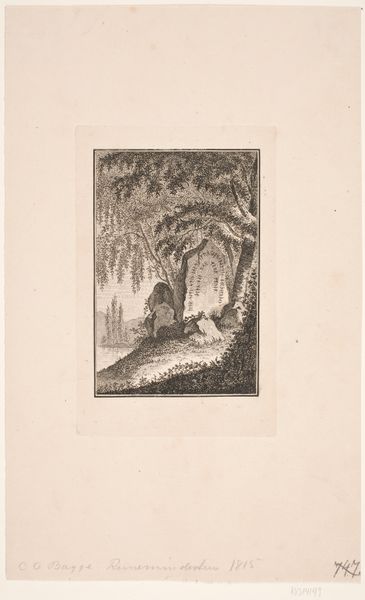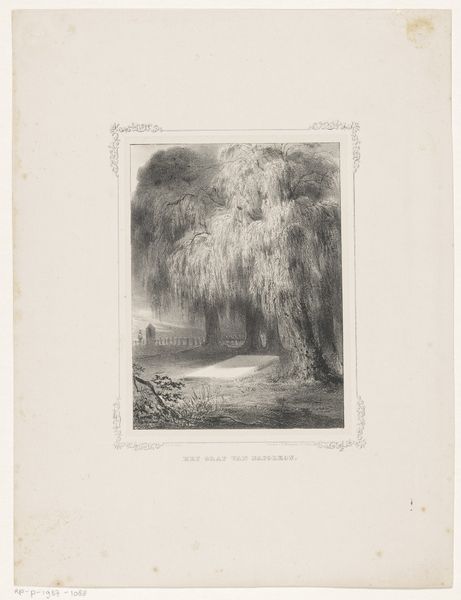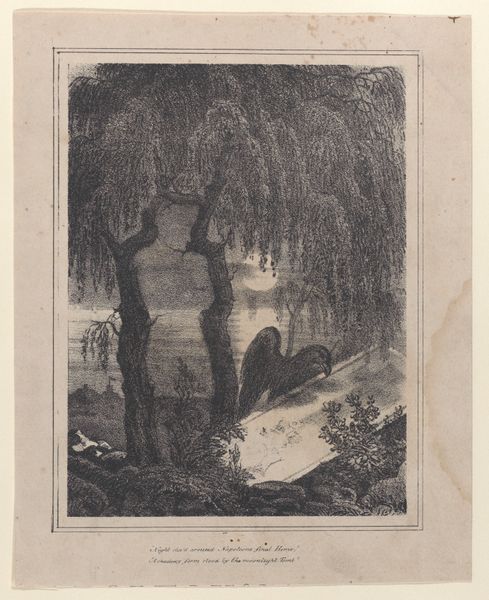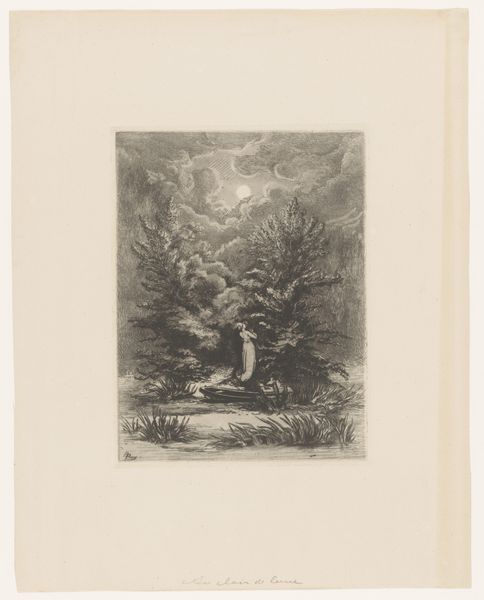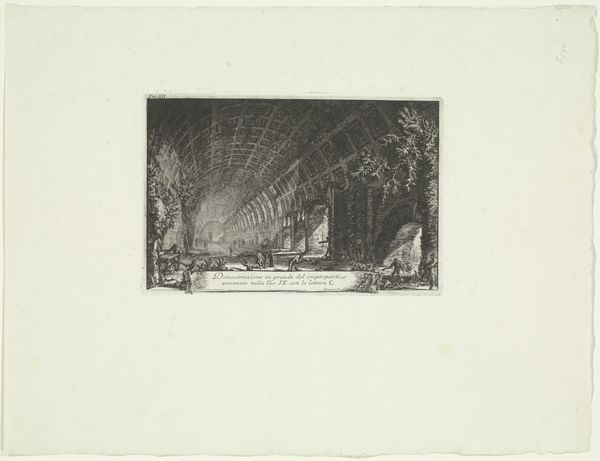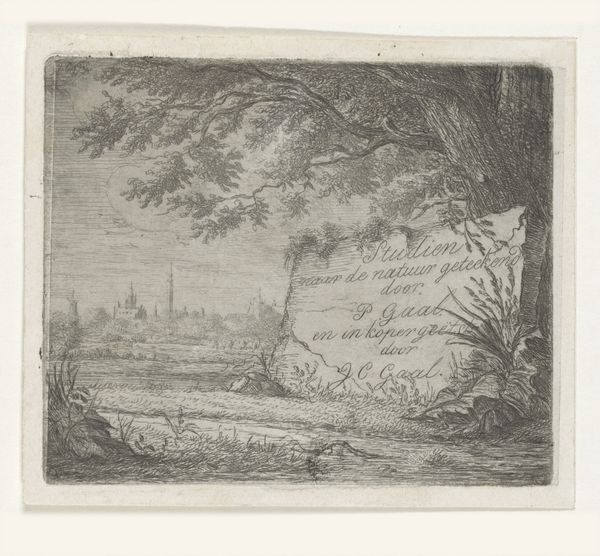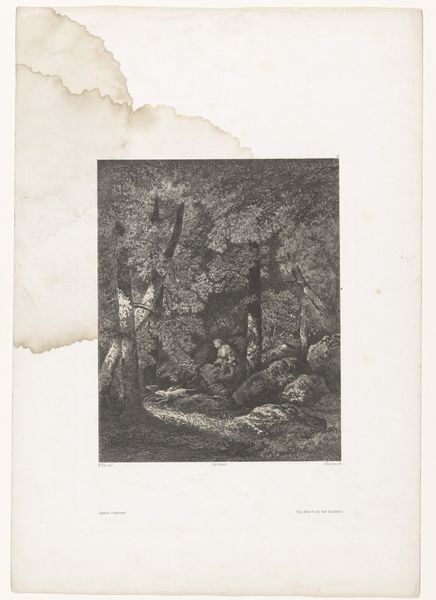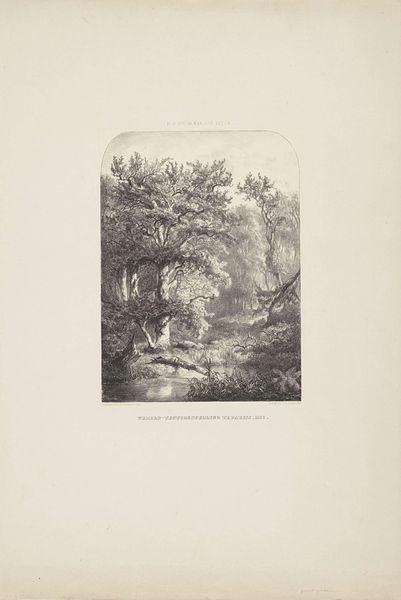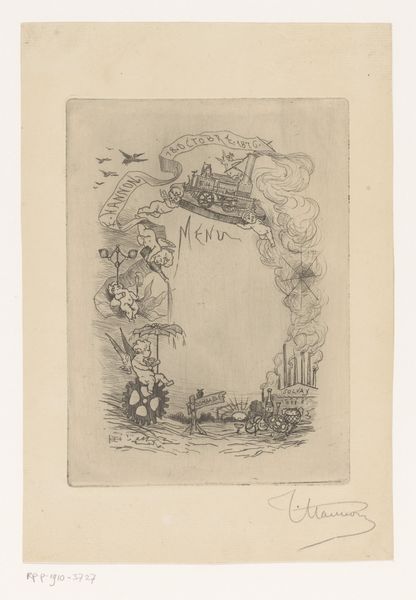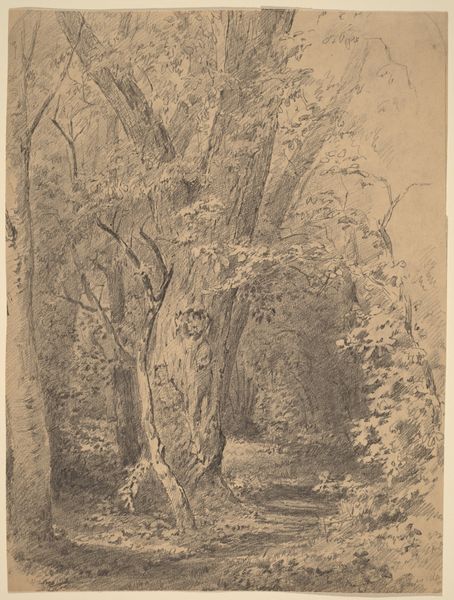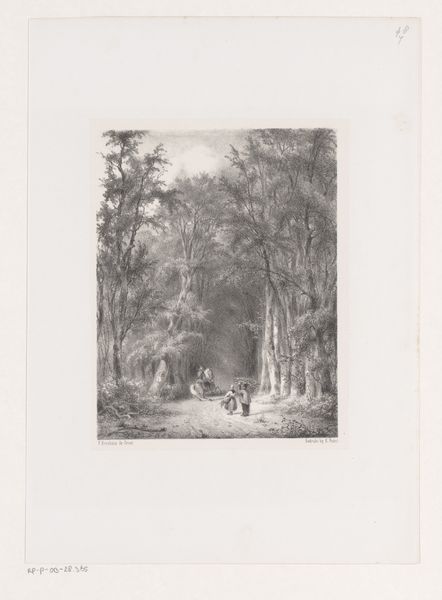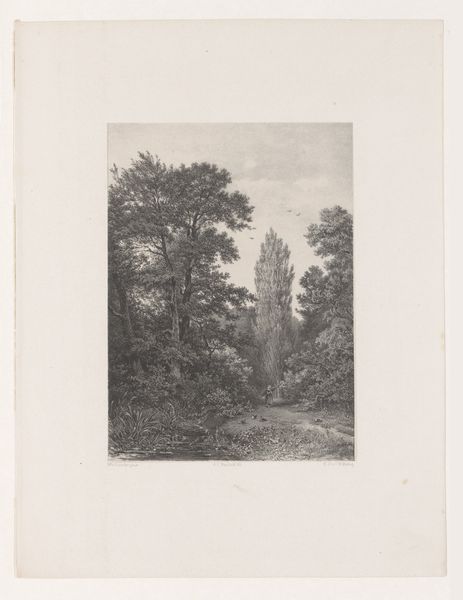
Begroeide berghelling met vrouwen die goederen op hun hoofd dragen Possibly 1911 - 1921
0:00
0:00
drawing, print, etching
#
drawing
#
narrative-art
# print
#
etching
#
landscape
#
etching
#
figuration
Dimensions: height 450 mm, width 368 mm
Copyright: Rijks Museum: Open Domain
Curator: Wijnand Otto Jan Nieuwenkamp created this etching, likely sometime between 1911 and 1921. It's titled "Begroeide berghelling met vrouwen die goederen op hun hoofd dragen," which translates to "Overgrown mountainside with women carrying goods on their heads." Editor: The etching is visually quite striking. The first impression is one of intricate detail— almost dreamlike in its execution. There’s a gentle quality to the lines that gives a certain stillness to the image. Curator: Nieuwenkamp spent a considerable amount of time traveling through Southeast Asia and was interested in documenting cultures he encountered in Java and Bali. Looking closer, the figures’ burdens symbolize the often-unseen labor that sustains communities. The act of carrying goods on their heads becomes a marker of identity, resilience, and cultural practice. Editor: I see what you mean about the symbolism; it is very compelling, though I must say, purely from an aesthetic point of view, the balance in this work is exquisite. The repetition of shapes in the figures’ headwear, for example, mirrored in the towering tree overhead, really pleases the eye. The artist uses lines to build layers of texture that help define space and direct your gaze. Curator: That towering palm, anchoring the entire scene. I wonder if it signifies not just literal vegetation but the overarching narratives of colonialism and exoticism. The women navigate a terrain rendered ‘exotic’ for the Western gaze, even as they maintain their daily routines. Their actions can be perceived as a subtle form of resistance to imposed identities, underscoring agency amidst societal constraints. Editor: An intriguing proposition! I tend to regard the work through more basic pictorial devices: I notice how Nieuwenkamp used the delicate and curving lines to suggest depth in what is otherwise a flat plane. This work creates such a tangible sense of receding space. Curator: Ultimately, isn't that the strength of this work? It operates on so many levels. It invites formal analysis of line and form but refuses to let you ignore the realities faced by these women. It merges aesthetics with the story of survival and resilience in a way that elevates our understanding. Editor: A beautiful intersection of the structural and the historical that brings renewed insight to the piece, beautifully enriching one's observation.
Comments
No comments
Be the first to comment and join the conversation on the ultimate creative platform.
